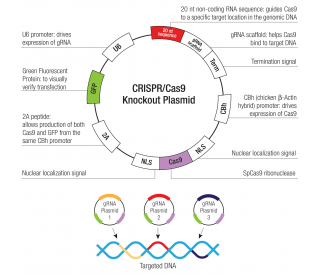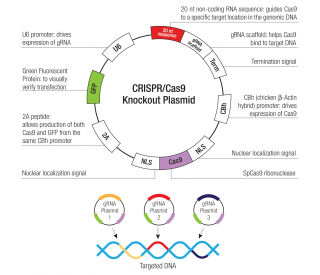详细说明
Species Reactivity
Human
Specificity
Detects human NLRP6/NALP6 in direct ELISAs.
Source
Monoclonal Mouse IgG 2B Clone # 920631
Purification
Protein A or G purified from hybridoma culture supernatant
Immunogen
E.coli-derived recombinant human NLRP6/NALP6
Lys35-Arg193
Accession # P59044Formulation
Lyophilized from a 0.2 μm filtered solution in PBS with Trehalose. *Small pack size (SP) is supplied as a 0.2 µm filtered solution in PBS.
Label
Unconjugated
Applications
Recommended
ConcentrationSample
Flow Cytometry
0.25 µg/10 6 cells
See below
CyTOF-ready
Ready to be labeled using established conjugation methods. No BSA or other carrier proteins that could interfere with conjugation.
Please Note: Optimal dilutions should be determined by each laboratory for each application. are available in the Technical Information section on our website.
Data Examples
Flow Cytometry | Detection of NLRP6/NALP6 in Jurkat Human Cell Line by Flow Cytometry. Jurkat human acute T cell leukemia cell line was stained with Mouse Anti-Human NLRP6/NALP6 Monoclonal Antibody (Catalog # MAB9145, filled histogram) or isotype control antibody (Catalog # , open histogram), followed by Allophycocyanin-conjugated Anti-Mouse IgG Secondary Antibody (Catalog # ). To facilitate intracellular staining, cells were fixed and permeabilized with FlowX FoxP3 Fixation & Permeabilization Buffer Kit (Catalog # ). View our protocol for . |
Preparation and Storage
Reconstitution
Reconstitute at 0.5 mg/mL in sterile PBS.
Shipping
The product is shipped at ambient temperature. Upon receipt, store it immediately at the temperature recommended below. *Small pack size (SP) is shipped with polar packs. Upon receipt, store it immediately at -20 to -70 °C
Stability & Storage
Use a manual defrost freezer and avoid repeated freeze-thaw cycles.
12 months from date of receipt, -20 to -70 °C as supplied.
1 month, 2 to 8 °C under sterile conditions after reconstitution.
6 months, -20 to -70 °C under sterile conditions after reconstitution.
Background: NLRP6/NALP6
NLRP6 (Nod-Like Receptor Pyrin domain-containing protein 6), also known as NALP6, PYPAF5 and PAN3, is an 80-85 kDa cytoplasmic member of the NLRP family of proteins. Human NLRP is 892 amino acids (aa) in length, and contains an N-terminal Pyrin domain (aa 1-103), one Nacht region (aa 197-350), and five consecutive C-terminqal leucine-rich repeats (aa 462-868). It is expressed in select cell types, including eosinophils, neutrophils, CD4+ and CD8+ T cells, neurons, myofibroblasts, and intestinal goblet cells plus columnar epithelium. NLRP6 is perhaps best known for its participation in the formation of inflammasomes. Inflammasomes are oligomeric intracellular complexes that serve as detectors for "danger signals" that appear following microbial invasion or unexpected cell death. Following detection, recruited components to the complex (such as Caspase-1) are activated, and subsequently themselves serve to activate pro-IL-1 beta and IL-18. The actual detection of these signals is mediated by the NLRP family, possibly in a tissue specific manner. NLRP6 has been identified in both damaged peripheral nerve and intestinal epithelium. In goblet cells, NLRP6 drives mucus secretion; in intestinal columnar epithelium, NLRP6 acts as a homeostatic agent that promotes epithelial barrier integrity. It accomplishes this by inducing mature IL-18 secretion, a step that then reduces IL-22BP production and leads to an increase in IL-22, a cytokine known for its pro-mucosal homeostatic properties. Although most insults to the intestinal mucosa likely arise from bacteria, NLRP6 is also known to recognize dsRNA-based viruses such as norovirus, and induce the expression of antiviral cytokines such as IFN-alpha, -beta and -lambda. Over aa 35-193, human NLRP6 shares 69% aa sequence identity with mouse NLRP6.
Long Name:
NLR Family, Pyrin Domain Containing 6
Entrez Gene IDs:
171389 (Human); 101613 (Mouse); 171390 (Rat)
Alternate Names:
Angiotensin II/Vasopressin Receptor; AVR; CLR11.4; NACHT, Leucine Rich Repeat And PYD Containing 6; NACHT, LRR And PYD Containing Protein 6; NACHT, LRR And PYD Domains-Containing Protein 6; NALP6; NAVR; NAVR/AVR; NLR Family, Pyrin Domain Containing 6; NLRP6 ; NLRP6; Nucleotide-Binding Oligomerization Domain, Leucine Rich Repeat And Pyrin Domain Containing 6; PAN3; PYPAF5; PYRIN-Containing APAF1-Like Protein 5







![Anti-CARD11 antibody [EPR2557] 100µl](https://yunshiji.oss-cn-shenzhen.aliyuncs.com/202407/25/ryuecwsu03m.jpg)
![Anti-CARD11 antibody [EPR2557] 40µl](https://yunshiji.oss-cn-shenzhen.aliyuncs.com/202407/25/0l4lvuuesv1.jpg)

![Anti-Caspase-9 antibody [E23] 100µl](https://yunshiji.oss-cn-shenzhen.aliyuncs.com/202407/25/3jnd4412gqi.jpg)

![Anti-CKS2 antibody [EPR7946(2)] 100µl](https://yunshiji.oss-cn-shenzhen.aliyuncs.com/202407/25/cfdt44gkqre.jpg)



 粤公网安备44196802000105号
粤公网安备44196802000105号